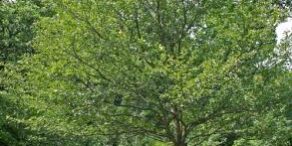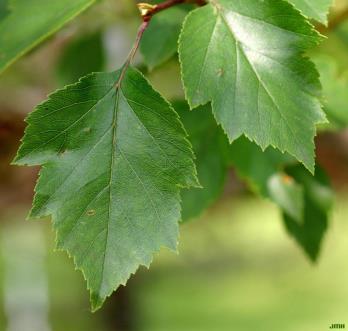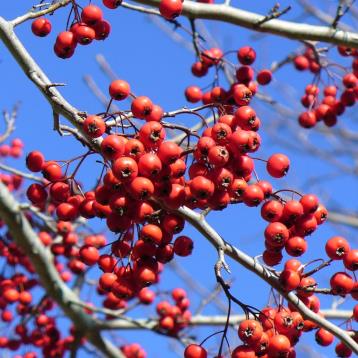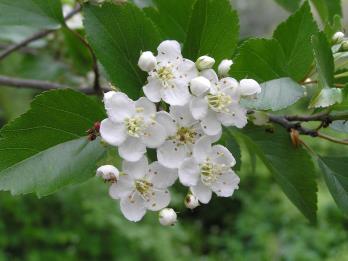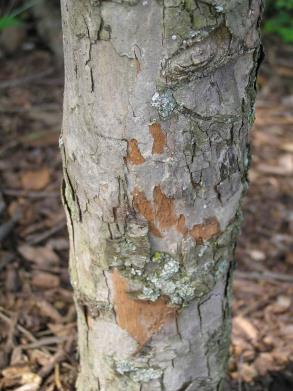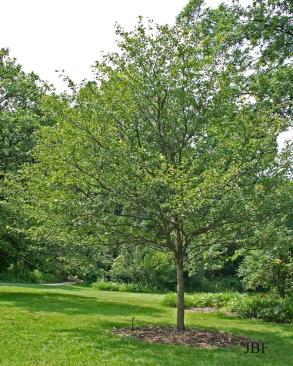
Green hawthorn is an adaptable, urban tolerant tree that offers winter interest with its abundant and attractive orange red fruit. It has pretty red to gold foliage in fall and handsome silver-gray peeling bark that shows orange underneath.1
Leaves are dark green foliage in the summer that changes to red to gold in the fall. Leaves are simple, alternate and 1-2 inches long. Flowers are 3/4 inch in diameter, round, fleshy, abundant, orange to red and persists in winter.1
Green Hawthorn is commonly found in bottom lands, swamps, and other wetlands.2
Birds are attracted to the fruit in the fall and find nesting shelter amid the thorny branches. Host to nectar-bees, nectar butterflies, and mammals seeking the fruit. Larval host for kings hairstreak, gray hairstreak, soapberry hairstreak, banded hairstreak, red-banded hairstreak.2
- Green Hawthorn. University of Kentucky College of Agriculture, Food and Environment. https://www.uky.edu/hort/GreenHawthorn. No Publication Date. Accessed January 24, 2024.
- Crataegus viridis. North Carolina Extension Gardener. https://plants.ces.ncsu.edu/plants/crataegus-viridis/. No Publication Date. Accessed January 24, 2024.
- https://mortonarb.org/app/uploads/2020/12/44875_ca_object_representations_media_43926_large-0x1120-c-default.jpg
- https://www.pfw.edu/microsites/nativetrees/images/trees/g-n/full/green-hawthorn-flower-original-01.jpg
- https://mortonarb.org/app/uploads/2020/12/72811_ca_object_representations_media_43925_large-1120×1067.5-c-default.jpg
- https://foodforestnursery.com/wp-content/uploads/2021/08/GreenHawthorn-2.jpg
- https://www.pfw.edu/microsites/nativetrees/images/trees/g-n/full/greenhawthorn-bark-original-01.jpg

